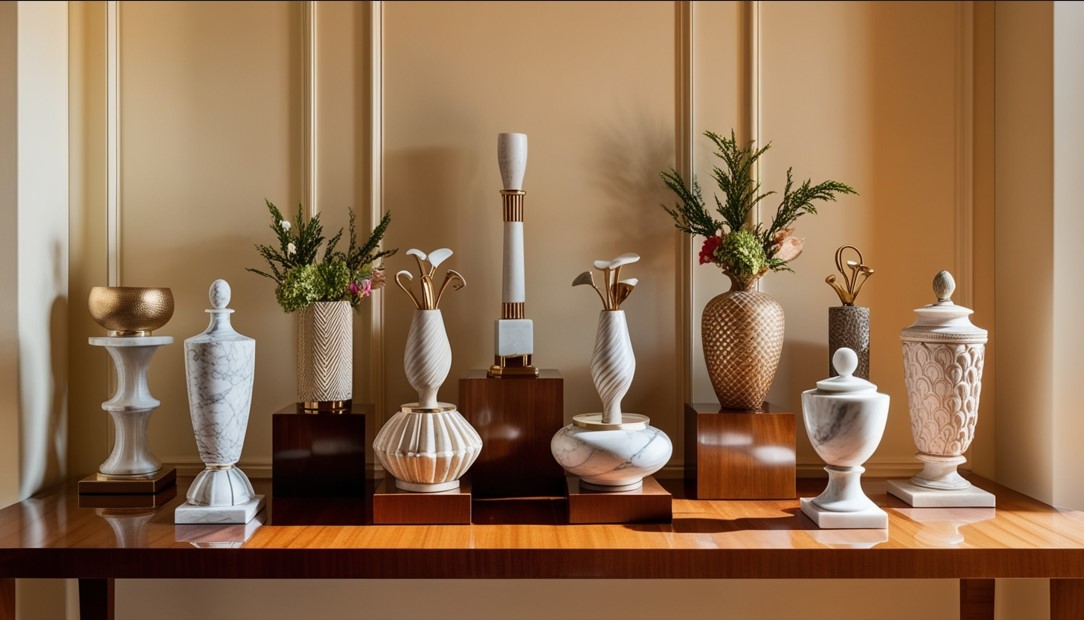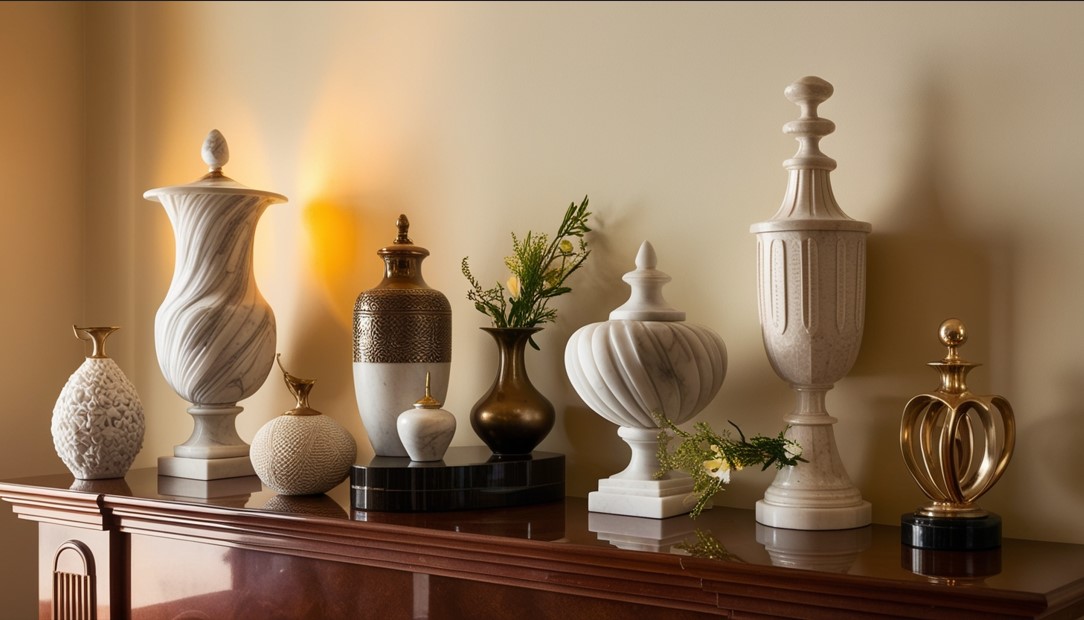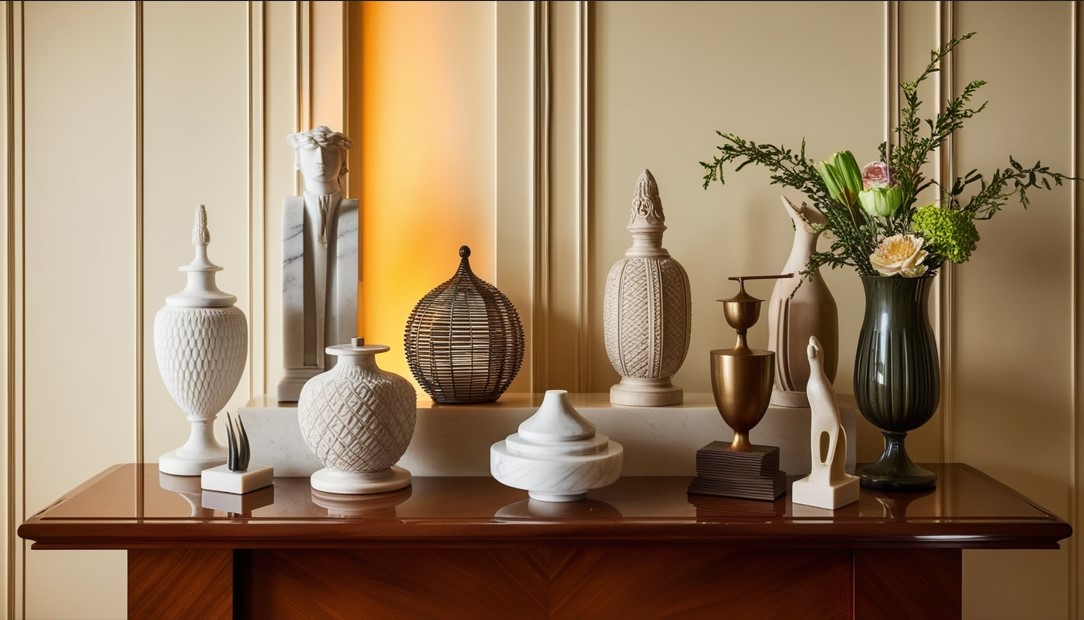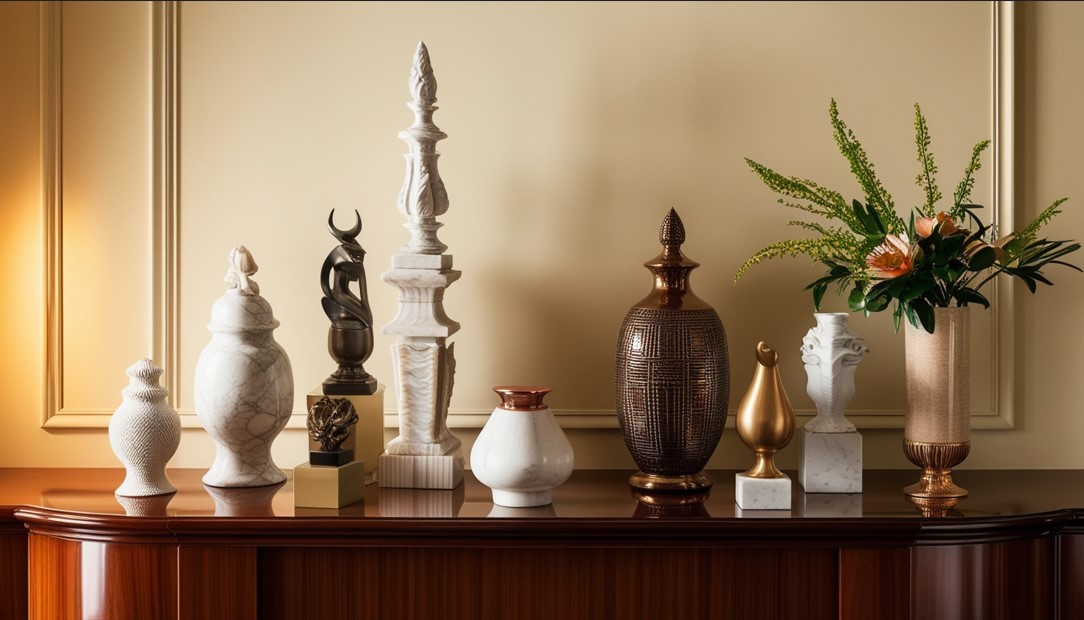Home decor is more than just furniture and wall color—it’s about the details that give your space personality and soul. One of the most potent ways to make a statement is with home decor sculptures. These artistic pieces, whether bold or subtle, classical or contemporary, bring elegance, depth, and uniqueness to any interior.
Sculptures can serve as conversation starters, focal points, or quiet elements that tie a room together. From abstract forms to traditional busts, minimalist designs to nature-inspired shapes, sculptures speak a universal language of creativity and self-expression. This comprehensive guide will explore how to choose, place, and style home decor sculptures to transform your home into a visually rich and inviting environment.
Understanding the Role of Home Decor Sculptures
Sculptures are three-dimensional art forms created through carving, modeling, or assembling stone, metal, wood, resin, ceramic, or glass. In the realm of home decor, sculptures add more than just visual interest—they provide:
- Texture: Breaking the monotony of flat surfaces and soft fabrics.
- Dimension: Adding height, volume, and balance to your decor.
- Focus: Acting as a centerpiece or drawing the eye to specific areas.
- Theme: Reinforcing the aesthetic tone of your home, be it modern, rustic, boho, or traditional.
- Emotion: Evoking feelings through symbolic design or artistic inspiration.
Sculptures are not limited to galleries or luxury estates. With many styles, sizes, and materials available today, there’s a perfect sculpture for every space, budget, and personality.
Popular Types of Home Decor Sculptures

Abstract Sculptures
Abstract sculptures are non-representational forms that emphasize shape, color, and form over recognizable subjects. They are ideal for modern, minimalist, and contemporary homes and often serve as bold centerpieces on coffee tables, console tables, or open shelving.
Figurative Sculptures
These pieces represent the human body or figures, often symbolizing grace, thought, or movement. They can range from classical Greco-Roman busts to modern interpretations of the human form.
Animal Sculptures
From majestic lions to peaceful birds, animal sculptures symbolize strength, wisdom, and freedom. These are often used in entryways, living rooms, or outdoor areas.
Nature-Inspired Sculptures
Think leaves, trees, waves, or sunbursts. Nature-themed sculptures bring organic beauty into your home and work well in earthy, rustic, or bohemian spaces.
Cultural and Spiritual Sculptures
Statues of deities, tribal artifacts, or ethnic symbols can reflect personal beliefs and add cultural depth. Popular examples include Buddha statues, African tribal masks, or Native American totems.
Wall Sculptures
Unlike flat paintings, wall sculptures use depth and shadows to create a dynamic look. Materials like metal, wood, or ceramic create intricate 3D wall decor.
Choosing the Right Sculpture for Your Space
1. Size Matters
When selecting a sculpture, proportion is key. A small figurine can be lost on a large mantelpiece, while an oversized piece may overwhelm a narrow shelf. Consider the sculpture’s size in relation to the furniture and the space around it.
- Small Sculptures: Best for bookshelves, coffee tables, desktops, or bathroom counters.
- Medium Sculptures: Ideal for side tables, consoles, and mantels.
- Large Sculptures: Great as standalone floor pieces, entryway focal points, or garden decor.
2. Match Your Style
Choose a sculpture that complements your interior style:
- Modern Homes: Opt for abstract or metal sculptures with clean lines.
- Rustic Homes: Wood-carved animals or nature figures blend well.
- Traditional Spaces: Marble busts or classical figures add timeless charm.
- Bohemian Decor: Handmade ceramic pieces or spiritual figures work well.
- Industrial Style: Look for iron, steel, or mixed-media pieces.

3. Consider the Material
Each material conveys a different mood and vibe:
- Metal: Modern, sleek, industrial.
- Wood: Warm, rustic, organic.
- Ceramic: Delicate, boho, or traditional.
- Glass: Elegant, reflective, artistic.
- Stone/Marble: Luxurious, classical, heavy-duty.
- Resin: Lightweight and affordable, available in diverse finishes.
4. Placement is Key
Where and how you display a sculpture can dramatically impact its effect. Here are some smart placement tips:
- Coffee Tables: Use a sculpture with books or candles as a centerpiece.
- Entryways: A sculpture can greet guests and set the tone for your interior.
- Shelving Units: Mix books, plants, and sculptures for a curated look.
- Console Tables: Add symmetry with matching figurines or use one dramatic piece.
- Corners and Alcoves: Tall sculptures fill awkward spaces elegantly.
- Dining Table or Kitchen Island: Choose sleek and non-intrusive sculptures for these areas.
5. Lighting Enhances Everything
Proper lighting can elevate the appearance of your sculpture by casting interesting shadows and highlighting textures. Use:
- Spotlights or Track Lights: To focus attention on a key piece.
- Natural Light: Near windows for glass or reflective sculptures.
- Accent Lamps: For a soft, ambient glow around tabletop pieces.
Mixing and Matching Sculptures with Other Decor
Blending sculptures with other design elements creates a balanced and inviting space. Here’s how to do it:
- Books and Sculptures: Place small sculptures on top of coffee table books.
- Sculptures and Plants: Combine organic textures with greenery.
- Paintings and Sculptures: Position sculptures near wall art to create dimension.
- Textures and Tones: Match your sculpture’s color or finish to other elements like rugs, curtains, or furniture hardware.
Seasonal and Rotating Sculptures
One of the fun aspects of decorating with sculptures is the ability to rotate them based on seasons or moods. Try:
- Fall: Wooden pumpkins, bronze leaves.
- Winter: Crystal trees, white or silver figurines.
- Spring/Summer: Floral sculptures, pastel-toned ceramics.
- Festive Holidays: Themed mini sculptures or tabletop displays.
Rotating decor keeps your space fresh, making your home more interactive and dynamic.
Investing in Sculptural Art
Investing in delicate art sculptures is an excellent way to merge aesthetics and value for those who want to elevate their interior with collectible or artist-signed pieces. Consider:
- Supporting Local Artists: Buy from art fairs or galleries.
- Limited Editions: Look for numbered series from emerging or established sculptors.
- Custom Commissions: Hire artists to create bespoke pieces that perfectly fit your vision and space.
Not only do these sculptures enhance your home, but they can also appreciate over time.

Caring for Your Home Decor Sculptures
Different materials require different maintenance:
- Dust Regularly: Use a microfiber cloth or soft brush.
- Avoid Moisture: Especially for wood or metal, to prevent warping or rust.
- Display Safely: Place heavier pieces on sturdy surfaces to avoid tipping.
- Use Felt Pads Underneath sculptures to protect your furniture.
Proper care will ensure your sculptures remain beautiful and last for years.
FAQs About Home Decor Sculptures
1. Can I use sculptures in small apartments?
Absolutely! Choose compact, minimalist sculptures that don’t overpower your space. Vertical sculptures or wall-mounted options are ideal for maximizing visual impact in small areas.
2. Are resin sculptures durable for long-term use?
Yes, resin is lightweight, affordable, and highly durable. It’s also moisture-resistant, making it suitable for bathrooms or humid climates.
3. How do I choose the right sculpture for my living room?
Look at the room’s color scheme, theme, and existing textures. Select a piece that complements rather than competes. A good rule of thumb is to match the sculpture’s material or tone with other decor elements.
4. Where can I buy unique home decor sculptures?
Check out art galleries, local artisan markets, online platforms like Etsy, Wayfair, and even museum gift shops. For modern pieces, brands like West Elm and CB2 have great selections.
5. What is the best sculpture material for outdoor use?
Opt for durable and weather-resistant materials like stone, metal, or treated wood. Ensure the finish is suitable for sun, rain, and temperature changes.
Final Thoughts
Home decor sculptures are more than decorative objects—they’re artistic expressions that reflect your style, interests, and personality. Whether aiming for a sophisticated, eclectic, modern, or rustic vibe, the right sculpture can anchor your space and elevate its overall aesthetic.
From compact tabletop pieces to grand floor-standing statues, sculptures bring life and dimension to every corner of your home. You can turn your living space into a gallery of meaningful and inspiring art with thoughtful placement, complementary styling, and creativity.
So go ahead—make a bold statement, express your taste, and add artistic flair to your home with stunning sculptures that tell a story all their own.

